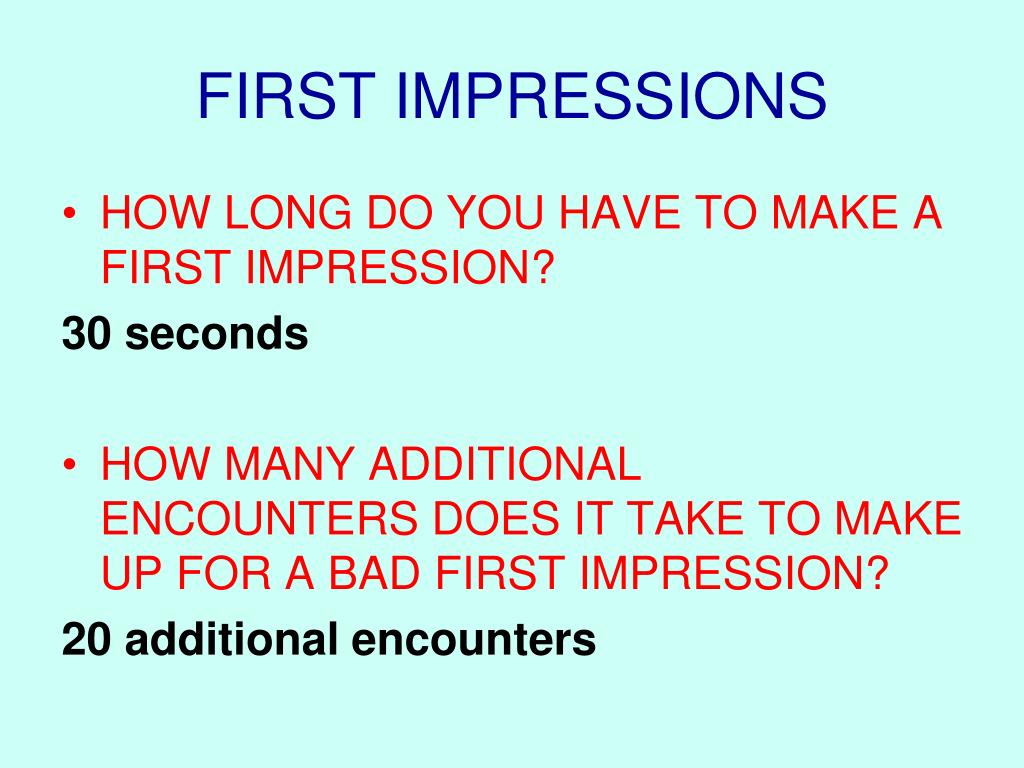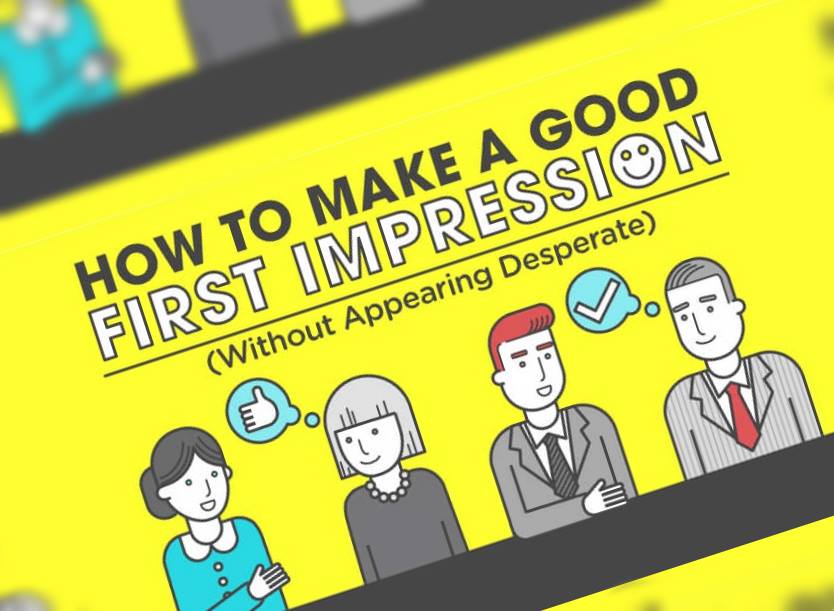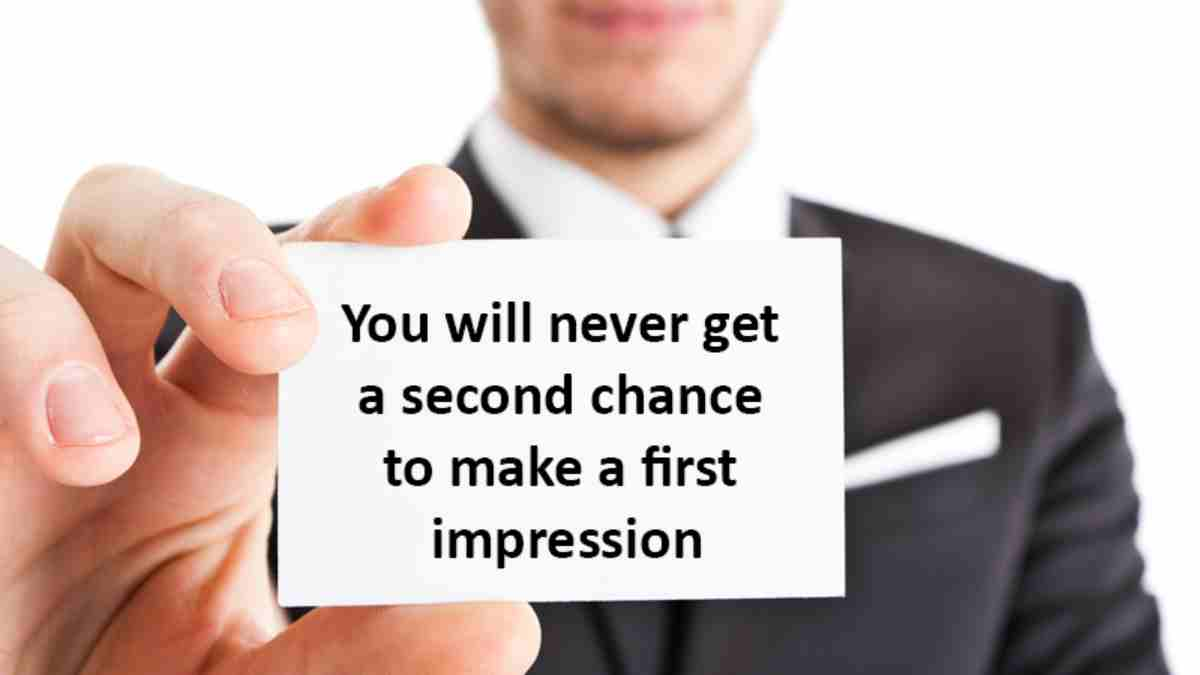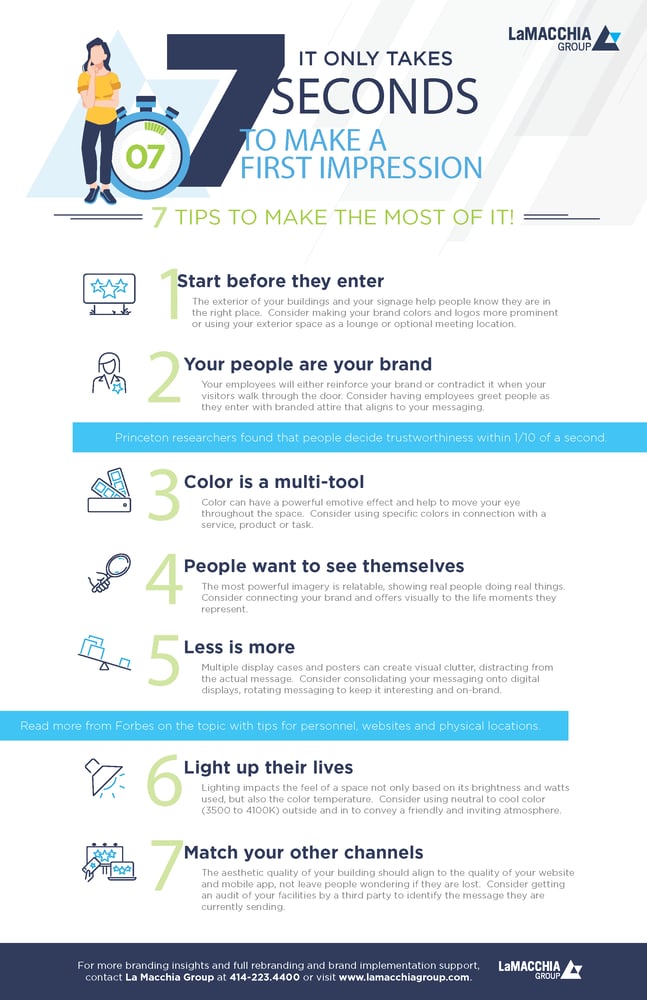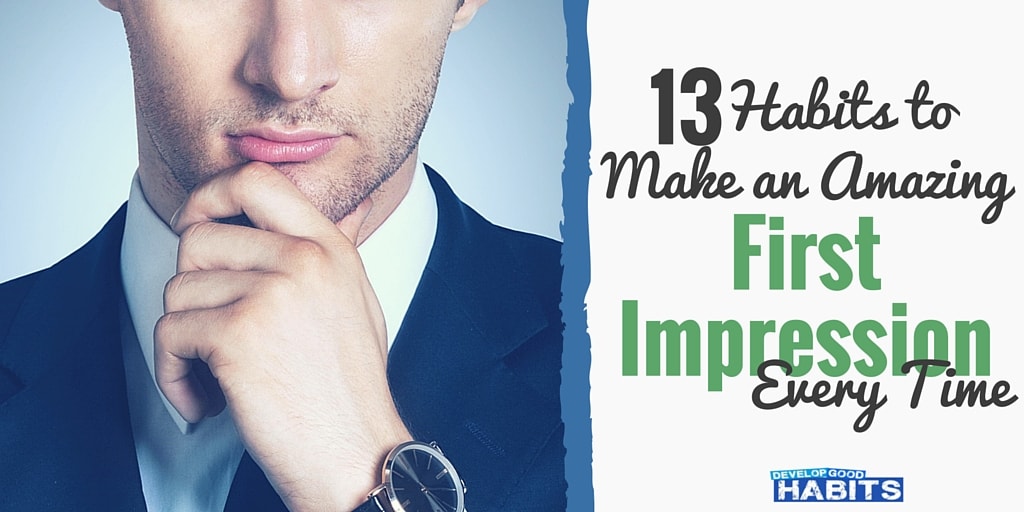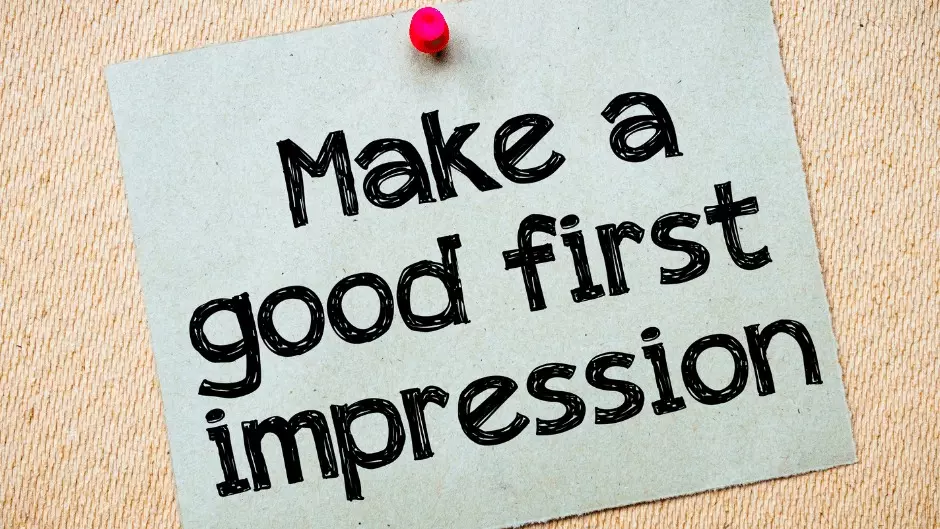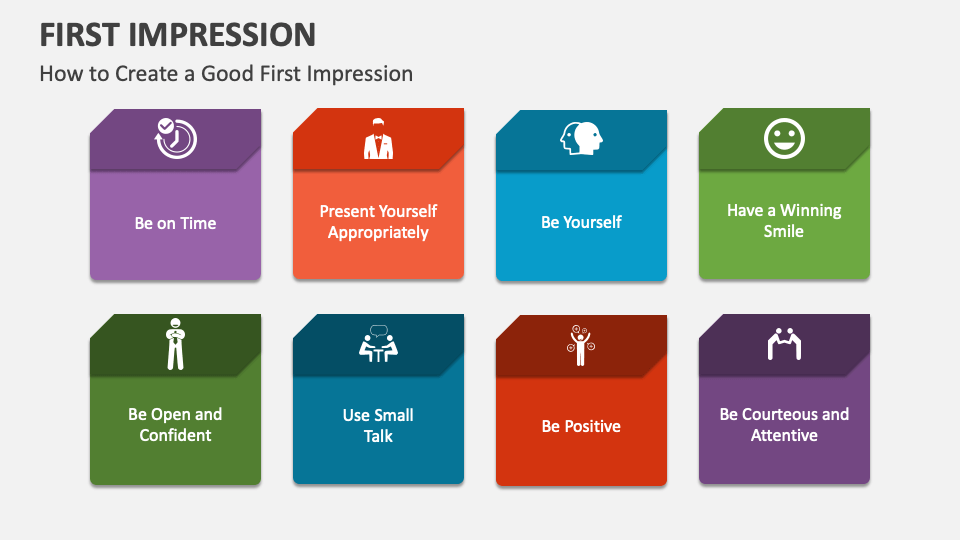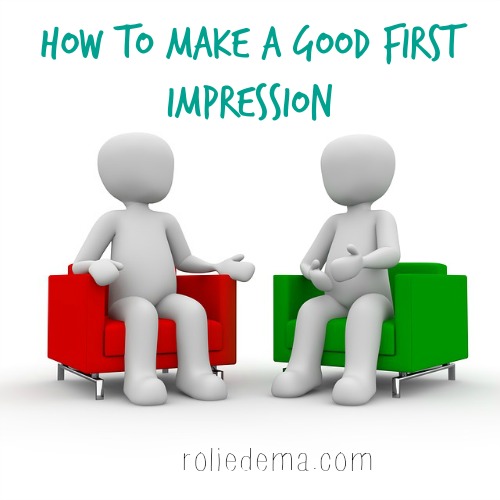How Long Does It Take To Create A First Impression
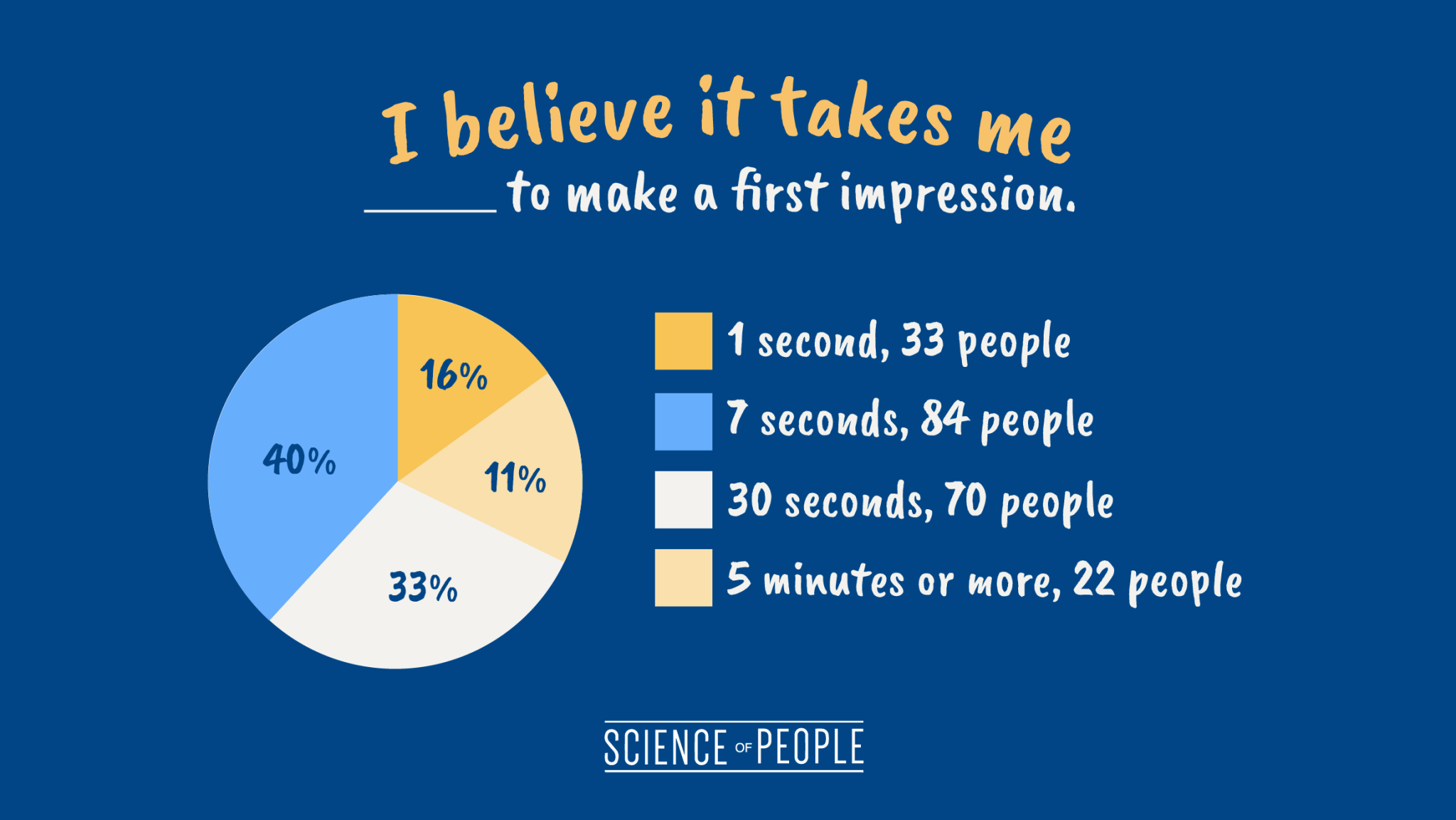
Imagine walking into a room filled with new faces, a palpable buzz of energy swirling around you. Eyes dart towards you, assessing, forming opinions in the blink of an eye. A smile, a handshake, a brief exchange – and just like that, a first impression is etched in their minds.
The question is, how long does this crucial moment actually last? It turns out, the answer is surprisingly quick.
Studies suggest that it takes mere seconds, and sometimes even milliseconds, to form a first impression. These initial judgments can significantly impact how others perceive us, affecting everything from social interactions to professional opportunities.
The Blink of an Eye: The Science of Snap Judgments
The speed at which we form impressions is rooted in our evolutionary past. Early humans needed to quickly assess whether a stranger was a threat or a potential ally.
This survival mechanism evolved into a complex cognitive process where we rely on heuristics, or mental shortcuts, to make rapid judgments. As explained by Professor Janine Willis, a psychologist at Princeton University, initial impressions are formed extremely rapidly, sometimes even before conscious awareness.
In her research, Willis found that people make judgments about trustworthiness, competence, and attractiveness within the first tenth of a second of seeing a new face.
Beyond Faces: Factors Influencing First Impressions
While facial cues are a primary factor, first impressions are influenced by a multitude of other elements. These include body language, tone of voice, clothing, and even the environment in which the interaction takes place.
According to social psychologist Amy Cuddy, author of "Presence," nonverbal cues play a crucial role in conveying confidence and trustworthiness. A firm handshake, direct eye contact, and an open posture can instantly boost someone’s perception of you.
Similarly, studies have shown that dressing appropriately for the context can significantly impact how others perceive your competence and professionalism.
The Lasting Impact: Why First Impressions Matter
Although formed quickly, first impressions can be remarkably durable. Research indicates that these initial judgments can create a "halo effect," where positive first impressions lead to positive perceptions in other areas.
Conversely, a negative first impression can be difficult to overcome. This is because of confirmation bias, a psychological tendency to seek out information that confirms pre-existing beliefs.
Therefore, making a positive initial impression is essential in both personal and professional settings. This can open doors to new relationships, career advancement, and greater opportunities.
Navigating First Encounters: Practical Tips
Knowing that first impressions are crucial and quickly made, what practical steps can we take to make a positive impact?
Firstly, be mindful of your body language. Maintain good posture, make eye contact, and offer a genuine smile.
Secondly, practice active listening. Show genuine interest in what the other person is saying, and respond thoughtfully.
Finally, be authentic and genuine. People can generally sense when someone is being disingenuous, so focus on being yourself.
In conclusion, while the science of first impressions may seem daunting, understanding the underlying principles can empower us to make better connections. Whether it's a job interview, a social gathering, or a chance encounter, remembering that those initial seconds can set the stage for lasting relationships.
